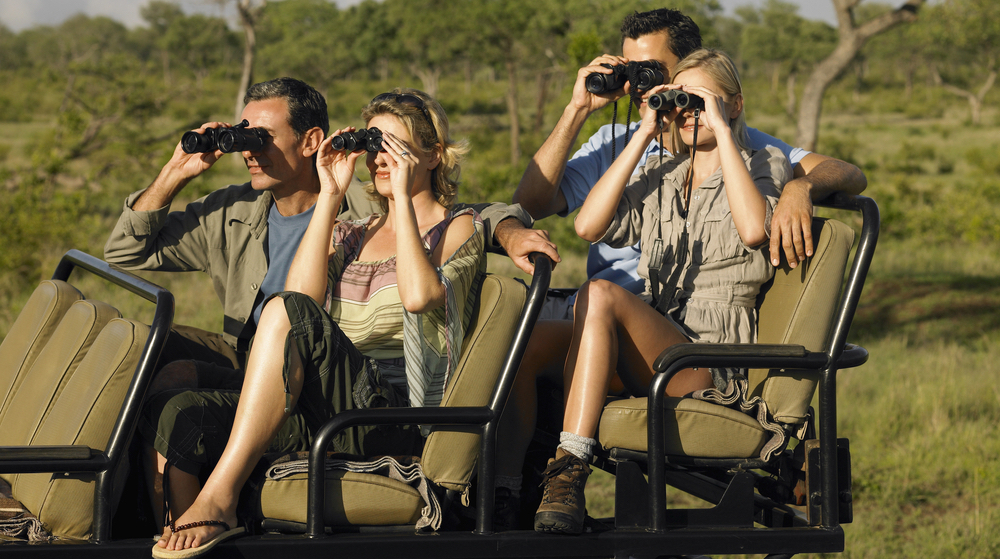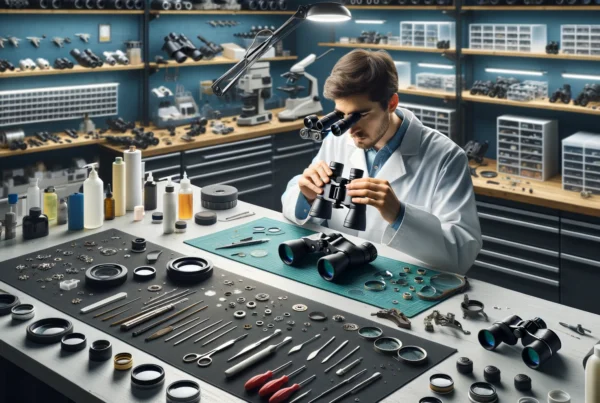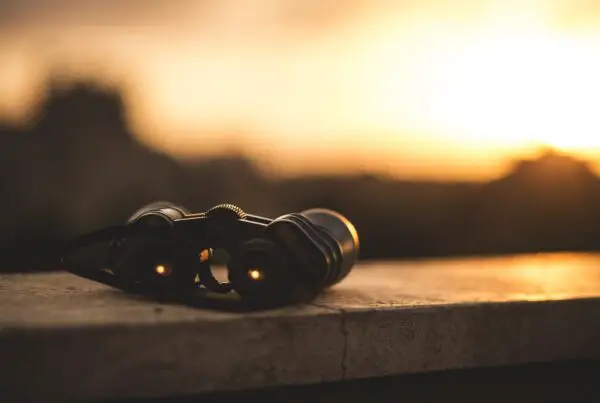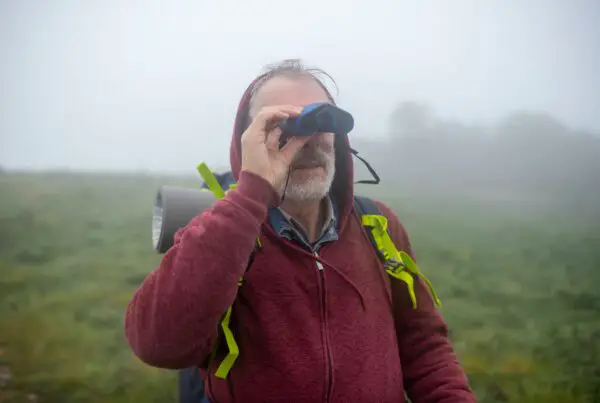Contents
- #1: The Magic of Magnification:
- #2: Objective Lens Diameter:
- #3: Unveiling the Field of View:
- #4: Picture-Perfect Image Quality:
- #5: Ruggedness and Weather Resistance:
- #6: Lightweight for Endurance:
- #7: Size and Weight:
- #8: Stability with Image Stabilization:
- #10: Comfort and Ergonomics:
- #11: Budget:
- #12: Try Before You Buy:
- Why Consider These Factors?
- Frequently Asked Questions (FAQs)
- Bottom Line
Embarking on a safari or wildlife photography expedition is a thrilling experience that brings you face to face with the awe-inspiring wonders of the natural world. To truly appreciate the intricate details of wildlife and capture stunning moments, a reliable pair of binoculars is essential.
Choose binoculars with magnification (8x to 10x), objective lens diameter to improve light gathering, wide field of view, high image quality, weather resistance, compact size, weight, and image stabilization. Comfort and ergonomics should also be taken into account for extended use.
However, with a plethora of options available, choosing the right binoculars can be a daunting task. In this article, we will delve into the key factors to consider when selecting binoculars for safaris and wildlife photography, equipping you with the knowledge to make an informed decision and enhance your wildlife adventure.
#1: The Magic of Magnification:
- The recommended magnification range for safaris and wildlife photography is typically between 8x and 10x. This range strikes a balance between bringing subjects closer and maintaining stability in hand-held observation.
- Higher magnifications, while offering a closer view, can amplify hand movements and make it more challenging to keep the image steady. It’s important to consider the trade-off between magnification and stability for optimal viewing and photography.
#2: Objective Lens Diameter:
- The objective lens size directly affects the binoculars’ light-gathering ability. A larger objective lens diameter allows more light to enter the binoculars, resulting in brighter and clearer images.
- Consider binoculars with larger objective lenses for improved low-light performance, ensuring better visibility during dusk or dawn safaris and wildlife photography.
- However, keep in mind that larger objective lenses increase the overall size and weight of the binoculars. It’s essential to strike a balance between lens size and portability based on your specific needs and preferences.
#3: Unveiling the Field of View:
- The field of view refers to the width of the observable area when looking through binoculars. It is measured in feet or meters at a specified distance.
- A wider field of view is advantageous for wildlife observation as it allows you to capture a larger area without constantly adjusting the binoculars. It enables you to track moving subjects and provides a more immersive experience.
- It is recommended to choose binoculars with a field of view exceeding 300 feet at a distance of 1,000 yards for optimal wildlife observation, ensuring you don’t miss any action-packed moments in the wild.

#4: Picture-Perfect Image Quality:
- Image quality in binoculars is determined by factors such as clarity, sharpness, color accuracy, and contrast. These factors greatly impact the level of detail and vibrancy in the observed images.
- High-quality optics and lens coatings play a crucial role in enhancing image quality. Premium coatings minimize reflections, improve light transmission, and reduce chromatic aberration, resulting in sharper and more accurate images.
- Distortion can hinder a clear view, so it’s essential to choose binoculars that minimize distortion. Look for models with aspherical or ED (Extra-low Dispersion) glass elements, which help reduce aberrations and deliver a clearer and more immersive viewing experience.
#5: Ruggedness and Weather Resistance:
- Safaris and wildlife photography often expose binoculars to challenging outdoor conditions such as rain, humidity, dust, and rugged terrain. It’s important to choose binoculars that can withstand these elements.
- Opt for binoculars that are ruggedly built, waterproof, and fog-proof. These features protect the internal components from moisture, ensuring clear visibility even in wet or humid environments.
- Additionally, binoculars should be able to handle rough handling and accidental drops without compromising their functionality. Durability and weather resistance are key factors in ensuring that your binoculars can withstand the demands of outdoor exploration.
#6: Lightweight for Endurance:
- While durability is vital, consider the weight of your binoculars, especially during extended wildlife adventures.
- Heavy binoculars can strain your arms and dampen the experience. Look for lightweight and compact options without compromising image quality, so you can focus on the marvels of nature without fatigue.
#7: Size and Weight:
- When selecting binoculars for safaris and wildlife photography, consider the portability and ease of handling. The size and weight of binoculars play a crucial role in your comfort and mobility during extended use.
- Compact and lightweight binoculars offer numerous benefits, such as ease of packing, carrying, and maneuvering in the field. They are particularly advantageous during long hikes or when weight restrictions apply.
- However, it’s important to note that there can be trade-offs between size/weight and image quality or additional features. Larger binoculars often offer superior image quality and advanced functionalities, but they may be bulkier and less convenient to carry. Strike a balance that suits your specific needs and priorities.
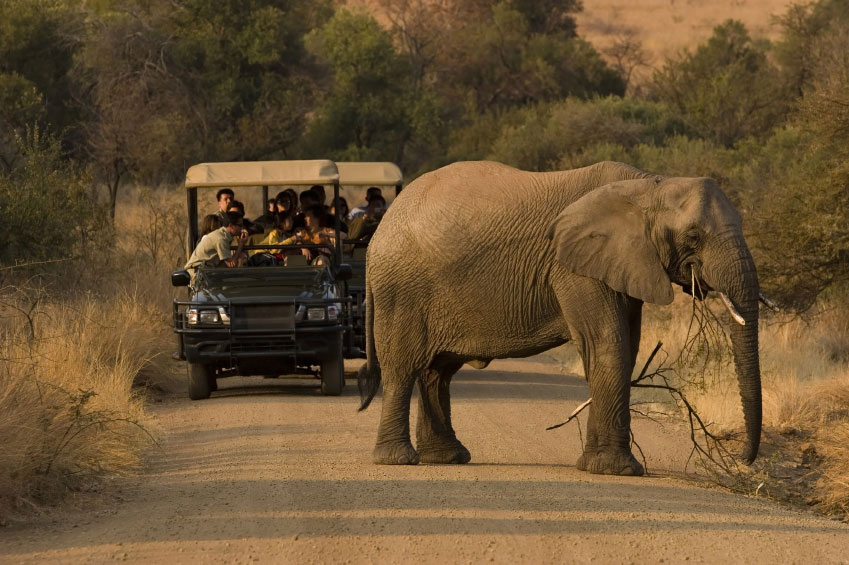
#8: Stability with Image Stabilization:
- Image stabilization is a feature that helps to minimize hand movements and vibrations, resulting in a steadier view through the binoculars. It is especially beneficial when observing wildlife or capturing photos where a stable image is crucial.
- Stabilized binoculars offer significant advantages for wildlife photography, as they allow you to achieve sharper and clearer images even when holding the binoculars by hand. This feature is particularly valuable when using higher magnifications or when shooting in challenging conditions.
- It’s important to consider that image-stabilized binoculars are generally heavier and more expensive compared to non-stabilized models. Additionally, they may require batteries for the stabilization mechanism, which can impact overall weight and battery life. Assess your specific needs and the balance between image stabilization benefits and the associated trade-offs.
#10: Comfort and Ergonomics:
- A comfortable grip is crucial for prolonged use of binoculars during safaris and wildlife photography. Look for models with a design that allows for a secure and ergonomic grip, reducing hand fatigue and providing a stable viewing experience.
- Consider binoculars with adjustable eyecups to accommodate different users and ensure proper eye relief. Also, check if the binoculars have an adjustable interpupillary distance, allowing you to customize the fit to match your specific eye spacing.
- Enhancing the viewing experience through comfort and ergonomics can significantly impact your overall enjoyment. Choose binoculars that offer a comfortable fit, easy focusing mechanisms, and intuitive controls, making it a pleasure to observe wildlife and capture breathtaking moments in nature.
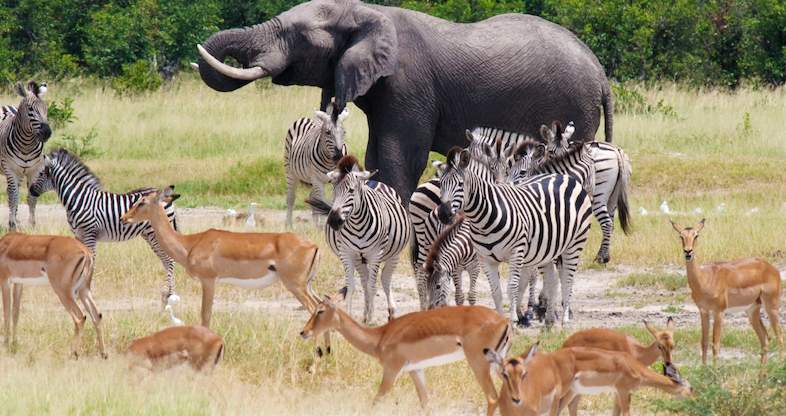
#11: Budget:
- When choosing binoculars for safaris and wildlife photography, it’s important to set a budget based on your specific requirements and quality expectations. Determine how much you are willing to invest in a pair of binoculars that meets your needs.
- Consider the trade-offs between features and cost. While higher-priced binoculars may offer advanced features and superior image quality, there are often more affordable options that still provide satisfactory performance for wildlife observation and photography. Evaluate the features that are essential to your specific use case and find a balance that fits within your budget.
#12: Try Before You Buy:
- Hands-on experience and comparison are crucial when selecting binoculars for safaris and wildlife photography. It allows you to assess factors like comfort, ergonomics, image quality, and overall feel before making a purchase.
- To gain this valuable experience, visit local stores that specialize in optics or attend optics demonstrations or trade shows where you can try out different binocular models. This firsthand experience will empower you to make an informed decision and ensure that the chosen binoculars align perfectly with your vision and needs.
Why Consider These Factors?
Close-up Views: Binoculars allow you to get a closer look at wildlife, bringing the details of animals and their behavior into clear focus, enhancing your overall safari experience.
Enhanced Observation: With binoculars, you can observe wildlife from a safe distance without disturbing their natural behavior, allowing for a more immersive and respectful wildlife viewing experience.
Improved Photography: Binoculars aid in scouting potential photography subjects and assessing their behavior, enabling you to capture stunning wildlife images with more precision and accuracy.
Field Awareness: Binoculars with a wide field of view provide a broader perspective, allowing you to better understand the wildlife’s habitat and the surrounding environment, enhancing your overall understanding of the ecosystem.
Low-Light Performance: Binoculars with larger objective lenses gather more light, enabling better visibility during dawn, dusk, and in shaded areas, ensuring you don’t miss out on captivating wildlife moments.
Stability and Focus: Binoculars with image stabilization minimize hand movements, providing a steady view, which is crucial for both observing wildlife and capturing sharp images during wildlife photography.
Comfort and Ergonomics: Choosing binoculars that offer a comfortable grip, adjustable eyecups, and suitable interpupillary distance ensures prolonged comfort during extended wildlife observation sessions, reducing strain and fatigue.
Durability and Weather Resistance: Opting for rugged, waterproof, and fog-proof binoculars ensures they can withstand the challenges of outdoor conditions, allowing you to confidently explore different terrains and weather conditions.
Portability: Compact and lightweight binoculars are easy to carry, making them ideal companions for safaris and wildlife photography, ensuring you can take them with you wherever your adventures lead.
Enriched Experience: By considering all the important factors, you can select the right binoculars that enhance your overall safari and wildlife photography experience, enabling you to fully appreciate and capture the wonders of the natural world.
Frequently Asked Questions (FAQs)
Q: What is the recommended magnification for binoculars used in safaris and wildlife photography?
A: The recommended magnification range is typically between 8x and 10x. This range offers a good balance between bringing subjects closer and maintaining stability in hand-held observation.
Q: How does the objective lens diameter affect binocular performance?
A: The objective lens diameter determines the light-gathering ability of binoculars. A larger objective lens diameter allows more light to enter, resulting in brighter and clearer images, especially in low-light conditions.
Q: Why is a wide field of view important for wildlife observation?
A: A wider field of view allows you to capture a larger area without constantly adjusting the binoculars. It helps in tracking moving subjects and provides a more immersive experience, allowing you to observe wildlife behavior and interactions within their natural habitat.
Q: What should I look for in terms of image quality when choosing binoculars?
A: Factors such as clarity, sharpness, color accuracy, and contrast contribute to image quality. Opt for binoculars with high-quality optics and coatings that minimize reflections and reduce aberrations for sharper and more vibrant images.
Q: How important is durability and weather resistance in binoculars for safaris?
A: Durability and weather resistance are crucial for binoculars used in safaris and wildlife photography. Look for binoculars that are rugged, waterproof, and fog-proof to withstand outdoor conditions, ensuring they can withstand rough handling, moisture, and temperature fluctuations.
Q: What are the trade-offs between compactness and image quality?
A: Compact binoculars are lightweight and easy to carry, making them convenient for extended use. However, larger binoculars often offer superior image quality due to larger objective lenses and advanced optical features. It’s important to strike a balance that suits your specific needs and preferences.
Q: Should I consider binoculars with image stabilization for wildlife photography?
A: Image-stabilized binoculars can be beneficial for wildlife photography as they minimize hand movements and vibrations, resulting in sharper images. However, they may be heavier, more expensive, and require batteries for the stabilization mechanism. Consider your specific photography needs and weigh the pros and cons before making a decision.
Q: How important is comfort and ergonomics when choosing binoculars?
A: Comfort and ergonomics are important for extended use of binoculars. Look for a comfortable grip, adjustable eyecups, and customizable interpupillary distance to ensure a comfortable viewing experience, reducing strain and fatigue during prolonged observation.
Q: Can I find binoculars suitable for safaris and wildlife photography on a budget?
A: Yes, there are binocular options available at various price points. Assess your requirements and quality expectations, considering the trade-offs between features and cost. You can find binoculars that offer satisfactory performance within your budget.
Q: Is it recommended to try binoculars before buying them?
A: Yes, trying binoculars before buying is highly recommended. Visit local stores specializing in optics or attend optics demonstrations to gain hands-on experience and compare different models. This allows you to assess comfort, ergonomics, and overall performance to make an informed decision.
Bottom Line
Selecting the ideal binoculars for safaris and wildlife photography requires thoughtful consideration of several factors. By taking into account magnification, objective lens diameter, field of view, image quality, durability, size, weight, image stabilization, comfort, and budget, you can find binoculars that perfectly suit your needs and enhance your wildlife observation and photography experiences.
So, equip yourself with the right pair of binoculars, and get ready to embark on an extraordinary journey through the mesmerizing world of wildlife.

A Binoculars enthusiast, who love exploring skies and watching birds. It is my hobby to collect Binoculars of different kinds and try to explore the world through various lenses. This is all I do to explore happiness by magnifying my beautiful world.

